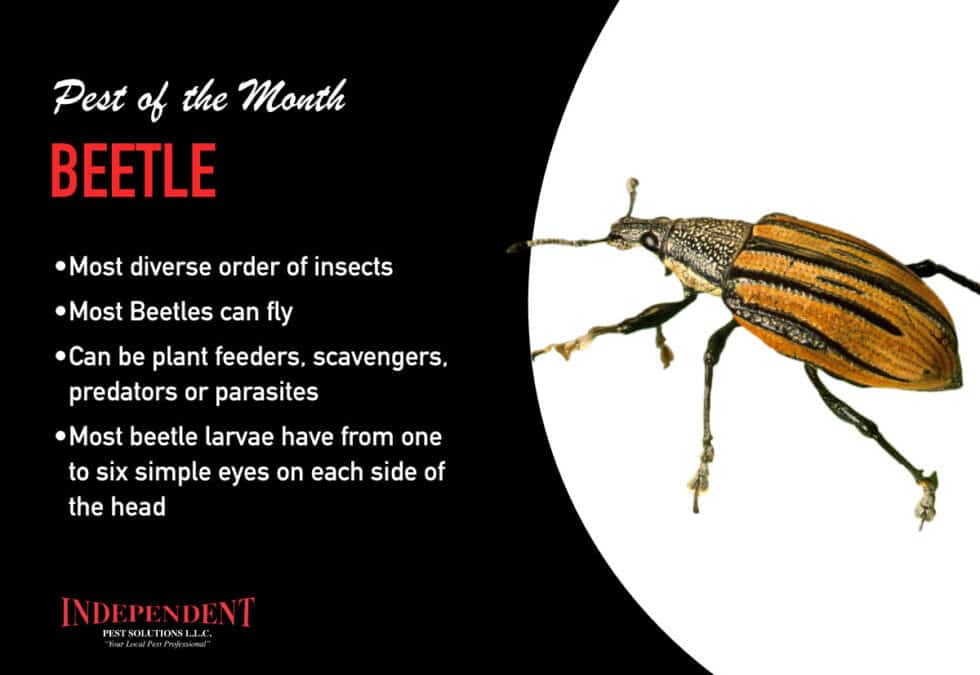Beetles and Weevils
The July Pest of the Month
Coleoptera is the most diverse order of insects. As with all pest control, proper identification is essential to complete pest control, elimination, and pest prevention. Tearing apart the pantry to get rid of bark beetles that are coming from your firewood will be a waste of time. On the other hand, paying to have a borate treatment for the wooden surfaces of a structure to eliminate bark beetles infesting it would be equally useless, since they only lay eggs on live wood. This is so the larva can feed on the cambium layer of the tree, where water and nutrients are transported.
Beetles and weevils technically have two pair wings, but the outer wings are hardened, shell-like covers called elytra. This is the first indicator that you are dealing with coleoptera, and elytra are possibly an important identifying characteristic. Some beetles closely resemble others in size, shape, and color, but one will have pitted lines on their elytra, while others will have actual grooves that run the length of the wing covers. The next identifying factor is actually the head location. Some types of beetles have heads that protrude from their thoraxes, and they are easily visible. You can then use the shape and location of the eyes to further identify the pest in question.
Other types of beetles have their heads under the pronotum, which is the plate that covers the thorax. Weevils will typically have a snout-shaped mouth while beetles usually do not. Speaking of mouth parts and their role in identification, it is important to know that there are 4 primary functions of mouthparts. They are chewing, piercing/sucking, sponging and siphoning. Most beetles have chewing mouthparts.
Finally, the go-to identifying characteristic of coleoptera is their antennae. Antennae have special names that are indicative of their shape. The shape of an insect’s antennae will give clues as to the purpose that their antennae serve, but for now let’s just focus on the fact that they are an identifying characteristic. There are twelve major types of antenna. They are setaceous, elbowed, pectinate, bipectinate, filiform, moniliform, lamellate, plumose, serrate, clavate, capitate, and aristate. For most types of beetles and weevils, their antennae will be clavate or capitate, which basically means that they are club-shaped or club-shaped with a couple of abruptly-bulging segments.
There are many, many types of beetles out there, so it comes as no surprise that many of them share some characteristics, but not all of them. For example, the drugstore beetle and the cigarette beetle are very similar in appearance. Drugstore beetles have clubbed antennae, with the last three segments being elongated and broadened. The pits on their elytra are in longitudinal rows, and their heads are under their pronotum. The Cigarette beetle has antennae that are serrated (saw-like) and the pits on their elytra are in scattered or irregular distribution patterns. Another difference is that their heads protrude from beneath the pronotum, and are visible from above. Beetles are a prime example of showing over and over again that identification is the most important aspect of control: “Know your enemy.”
If you are experiencing a Beetle problem in Puyallup or the surrounding areas, and need extra help with them, please give Independent Pest Solutions a call for a free estimate


